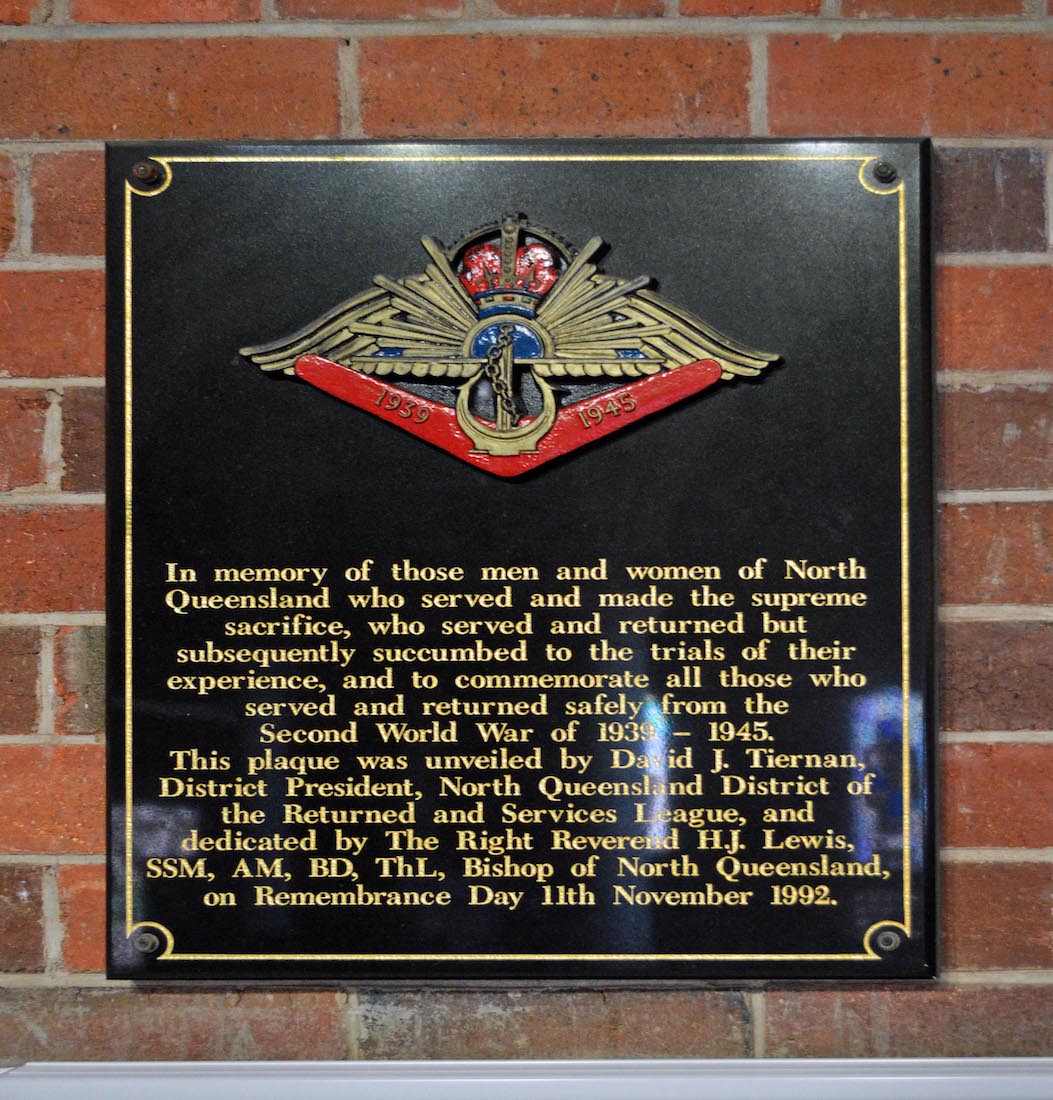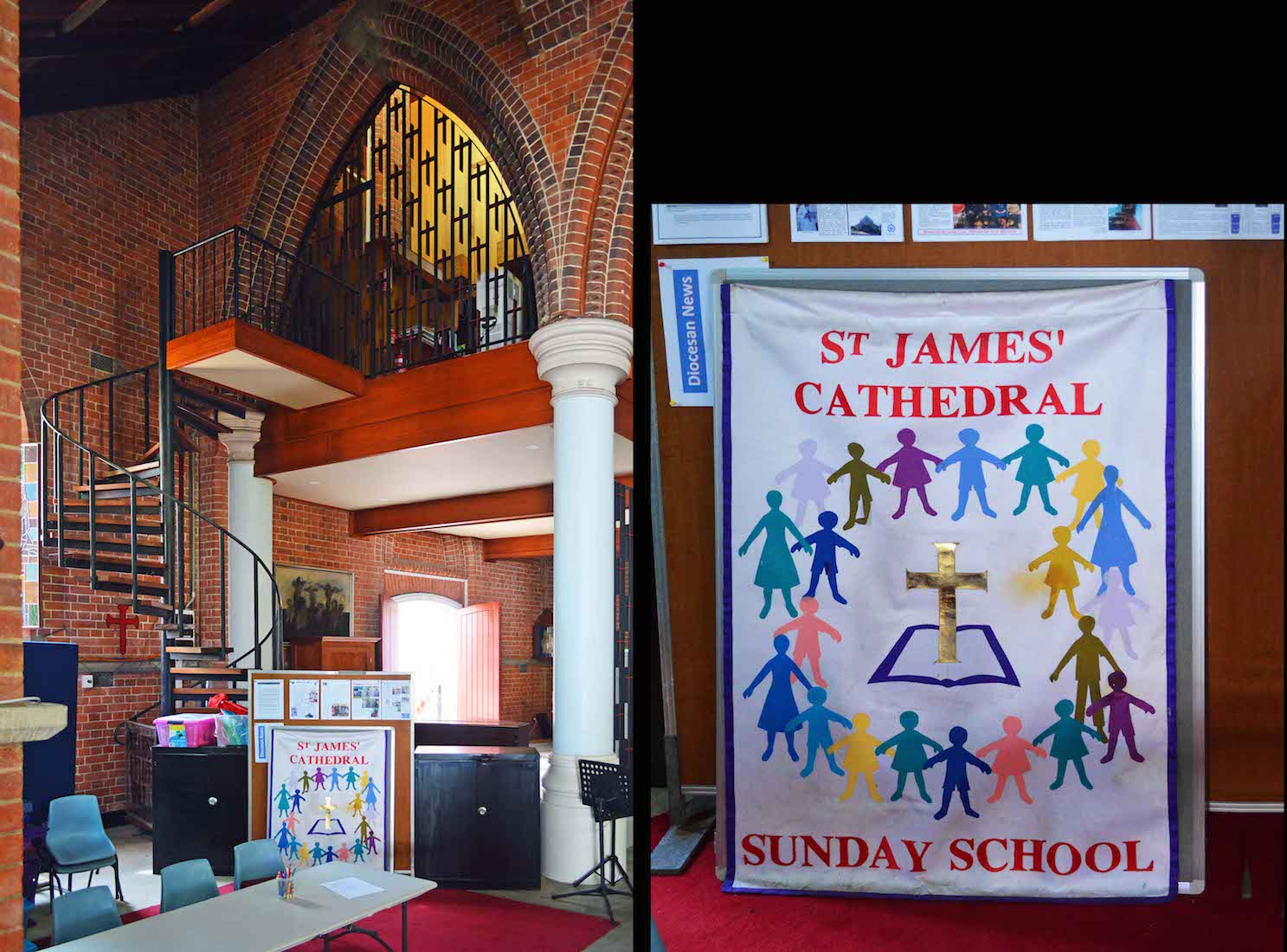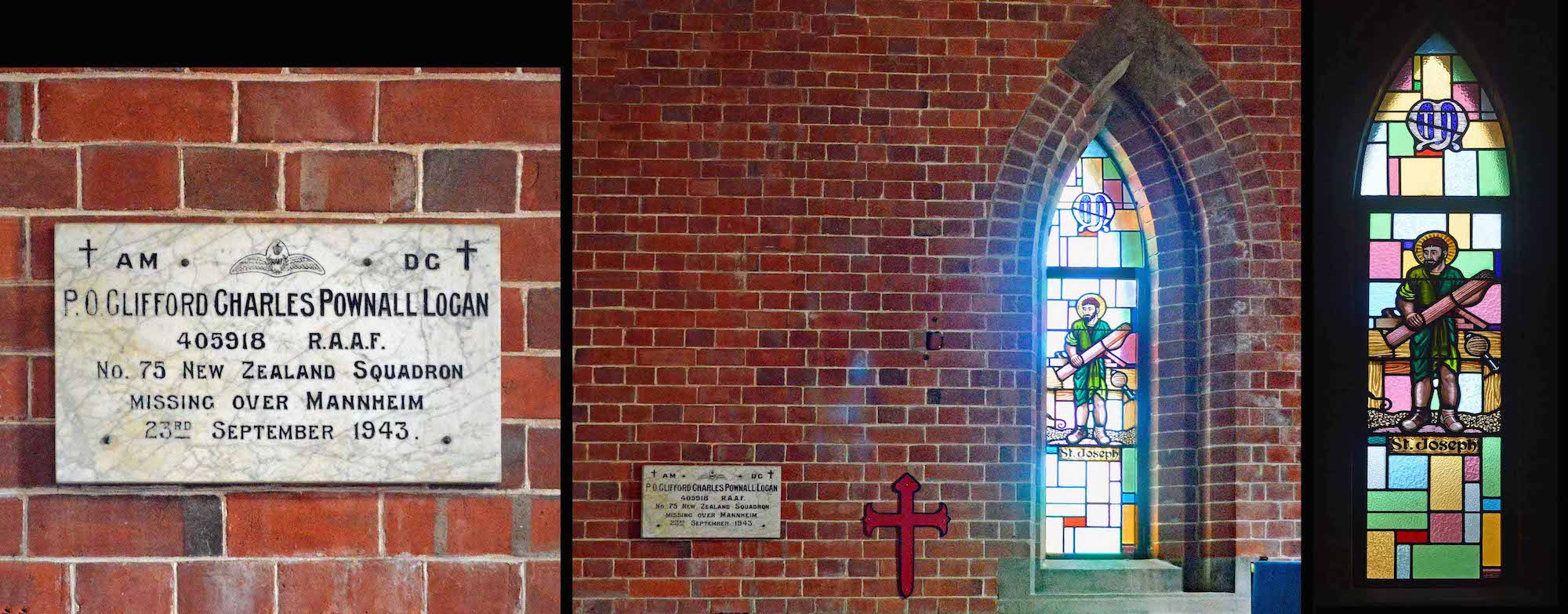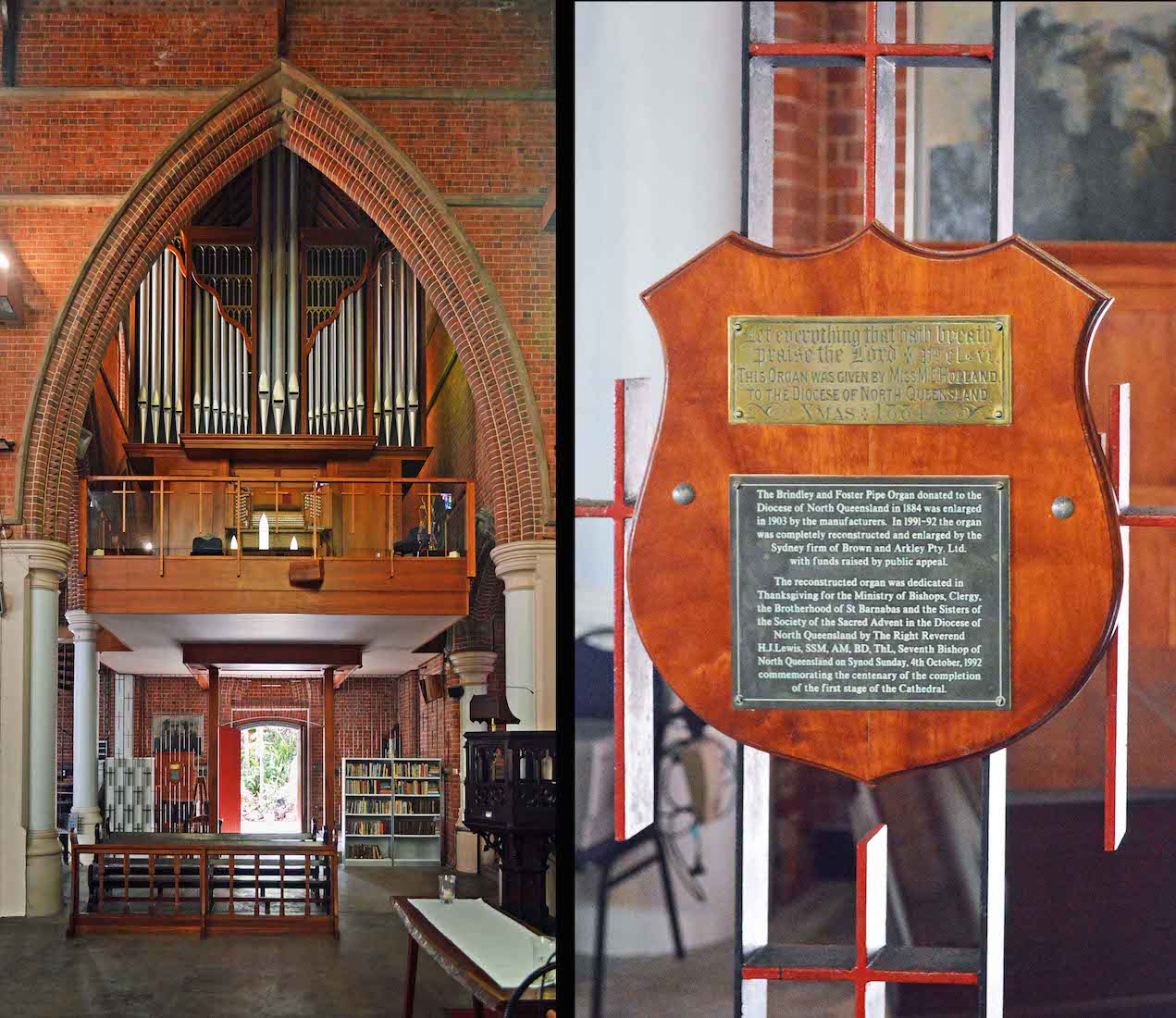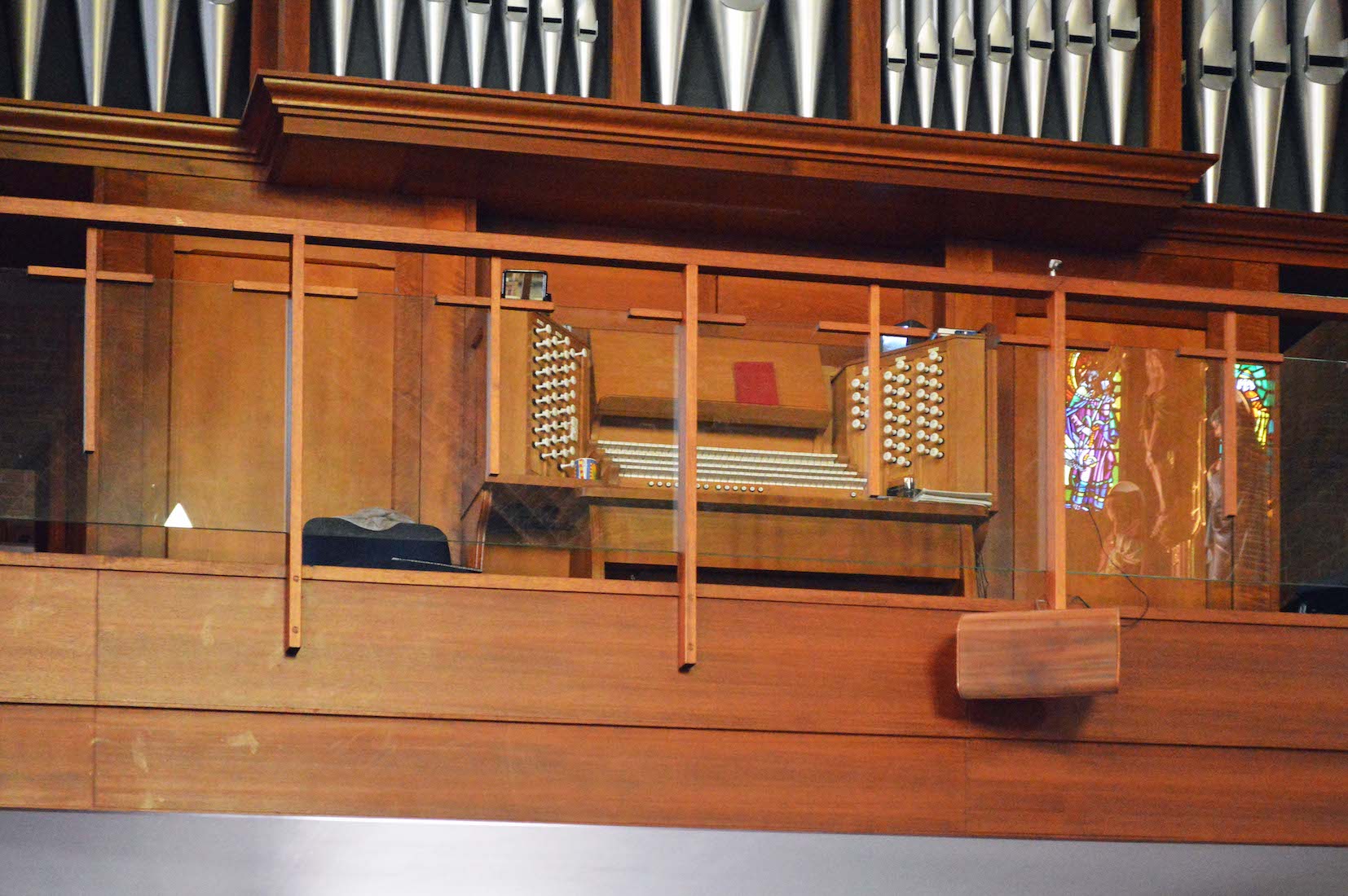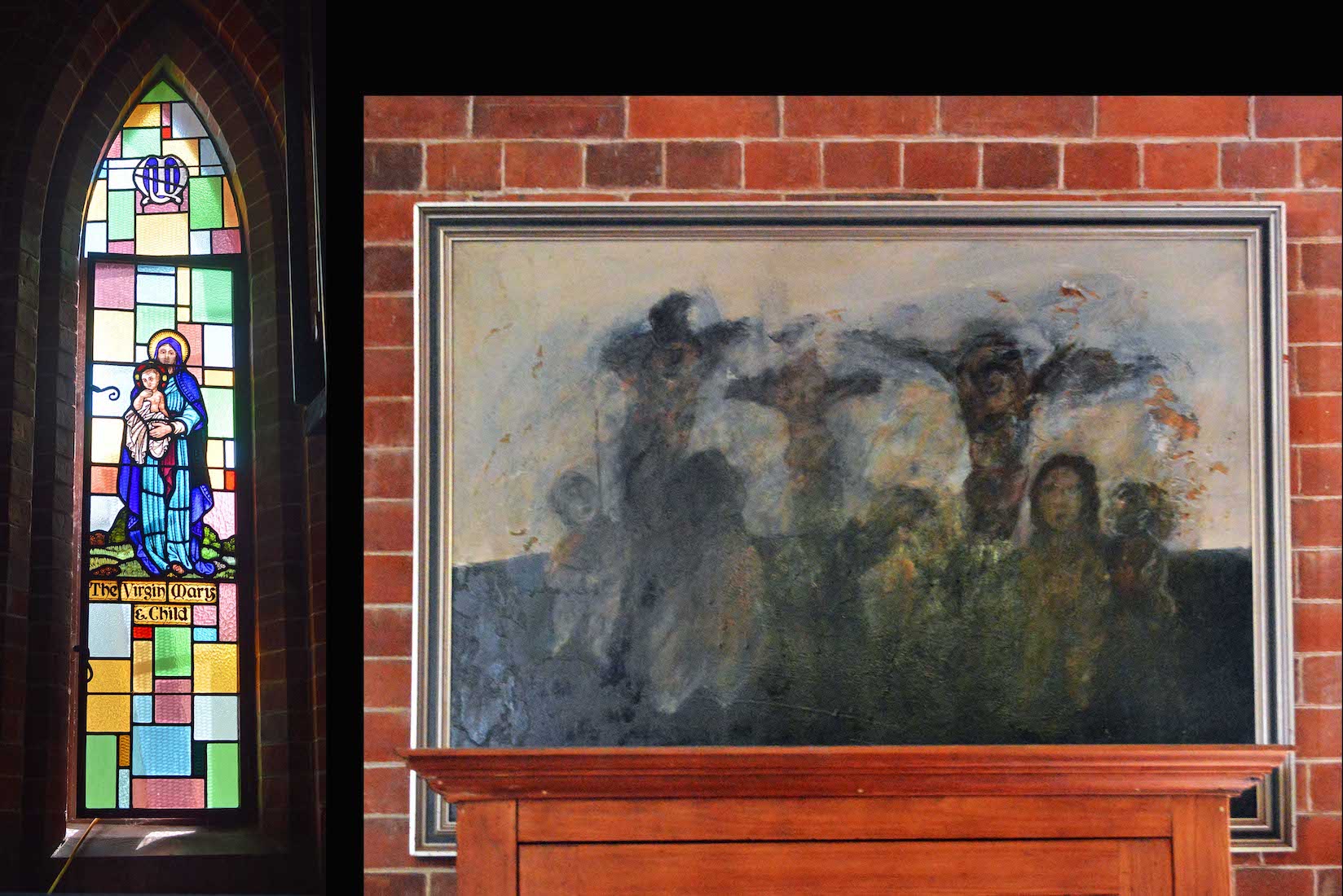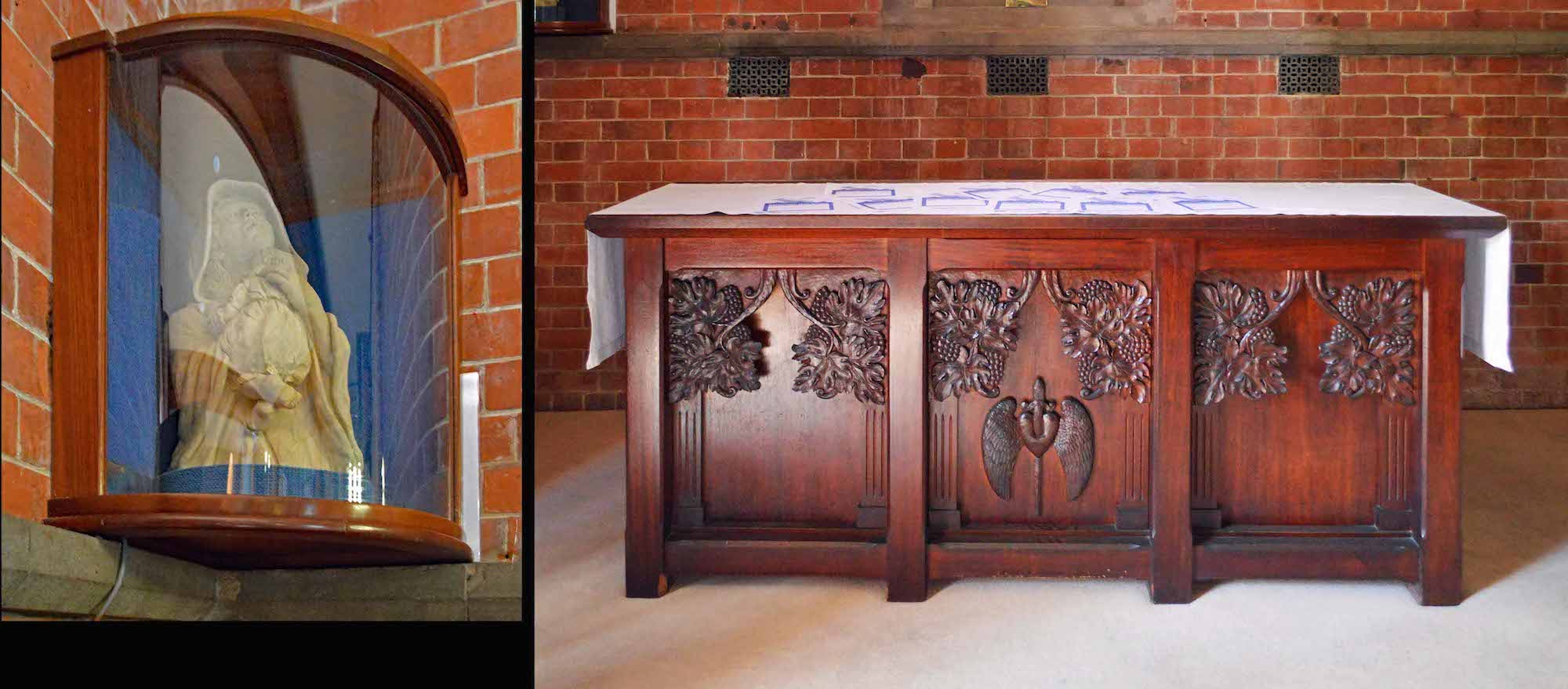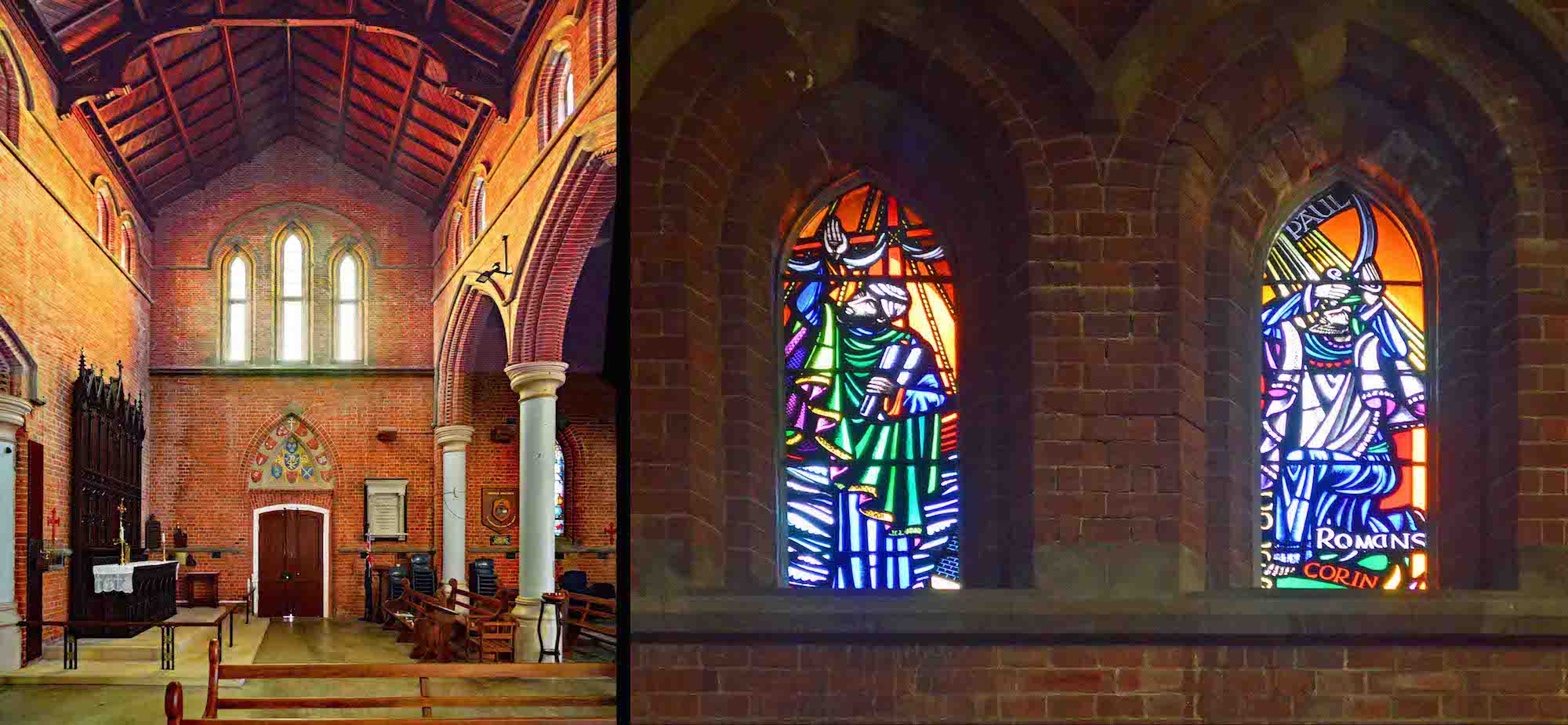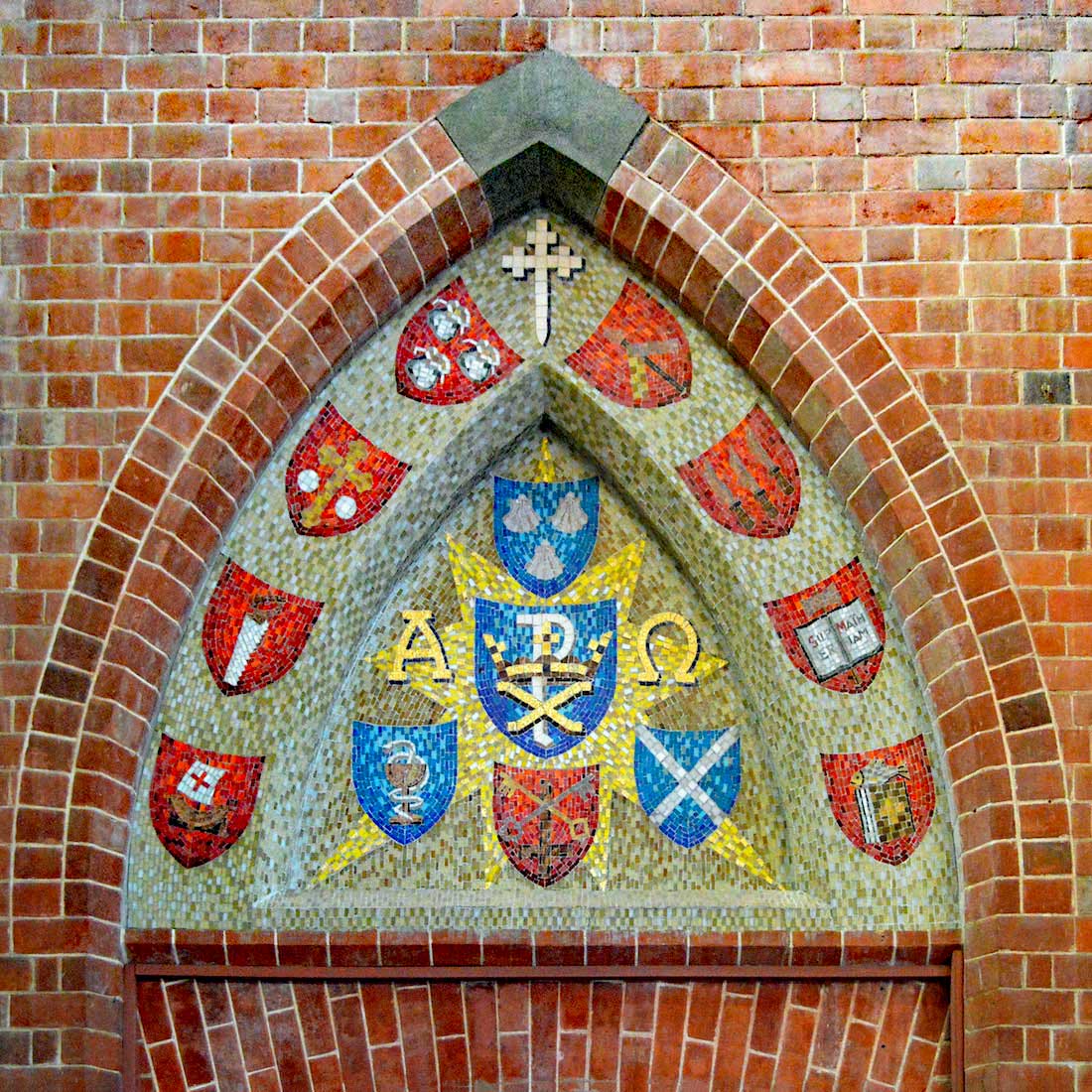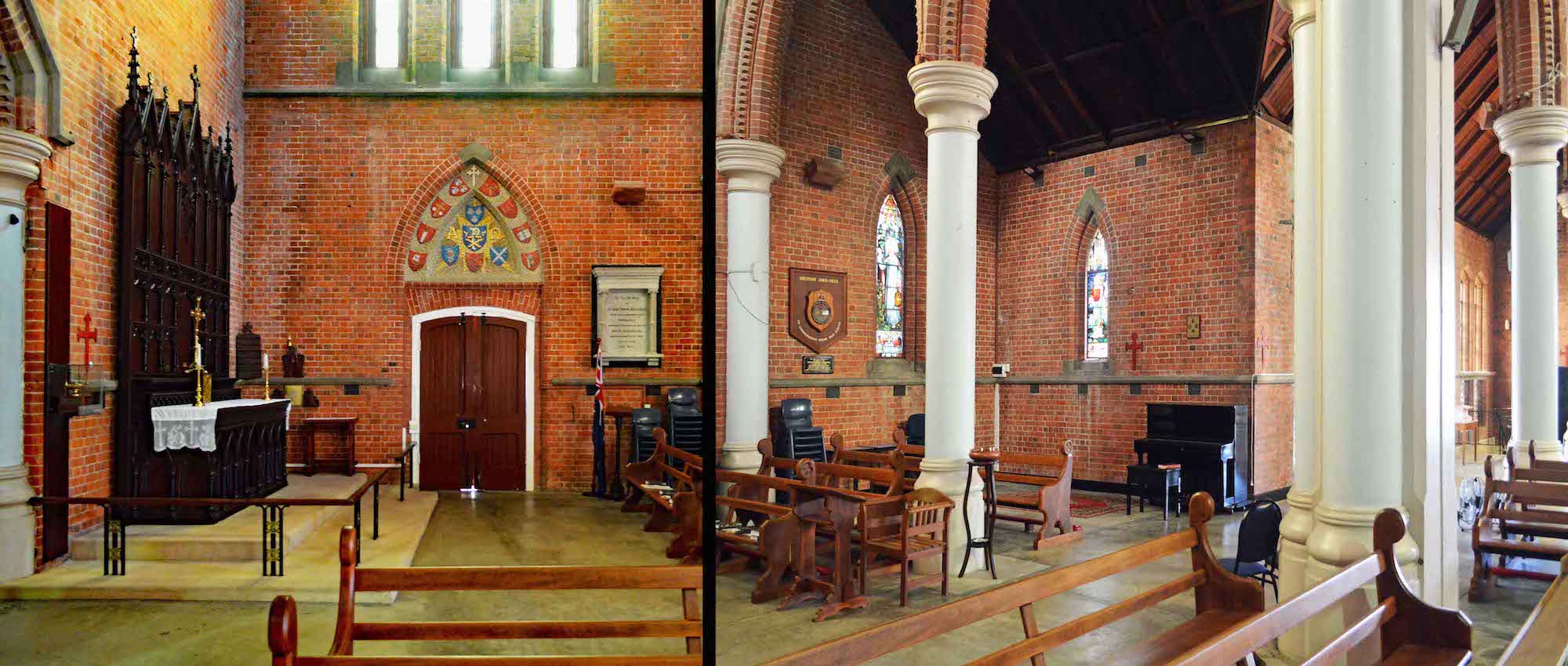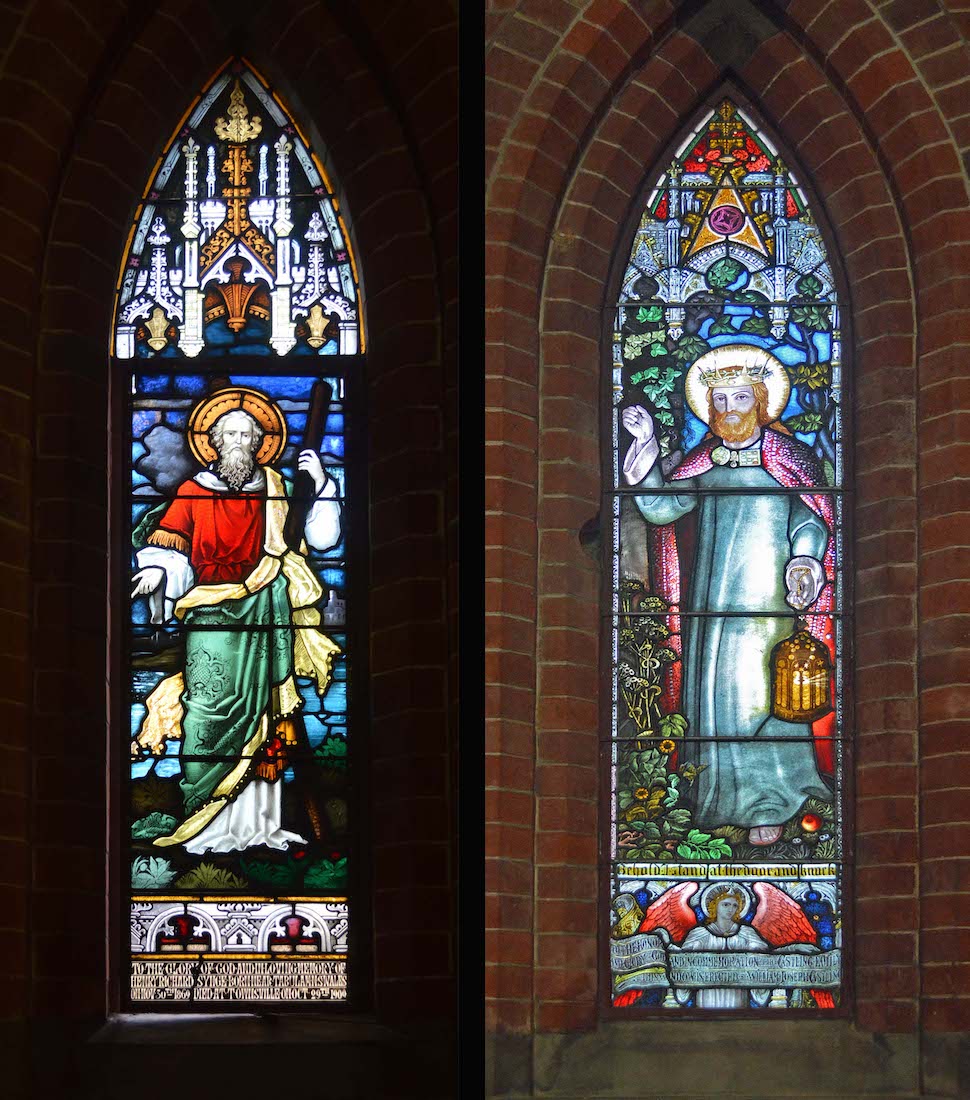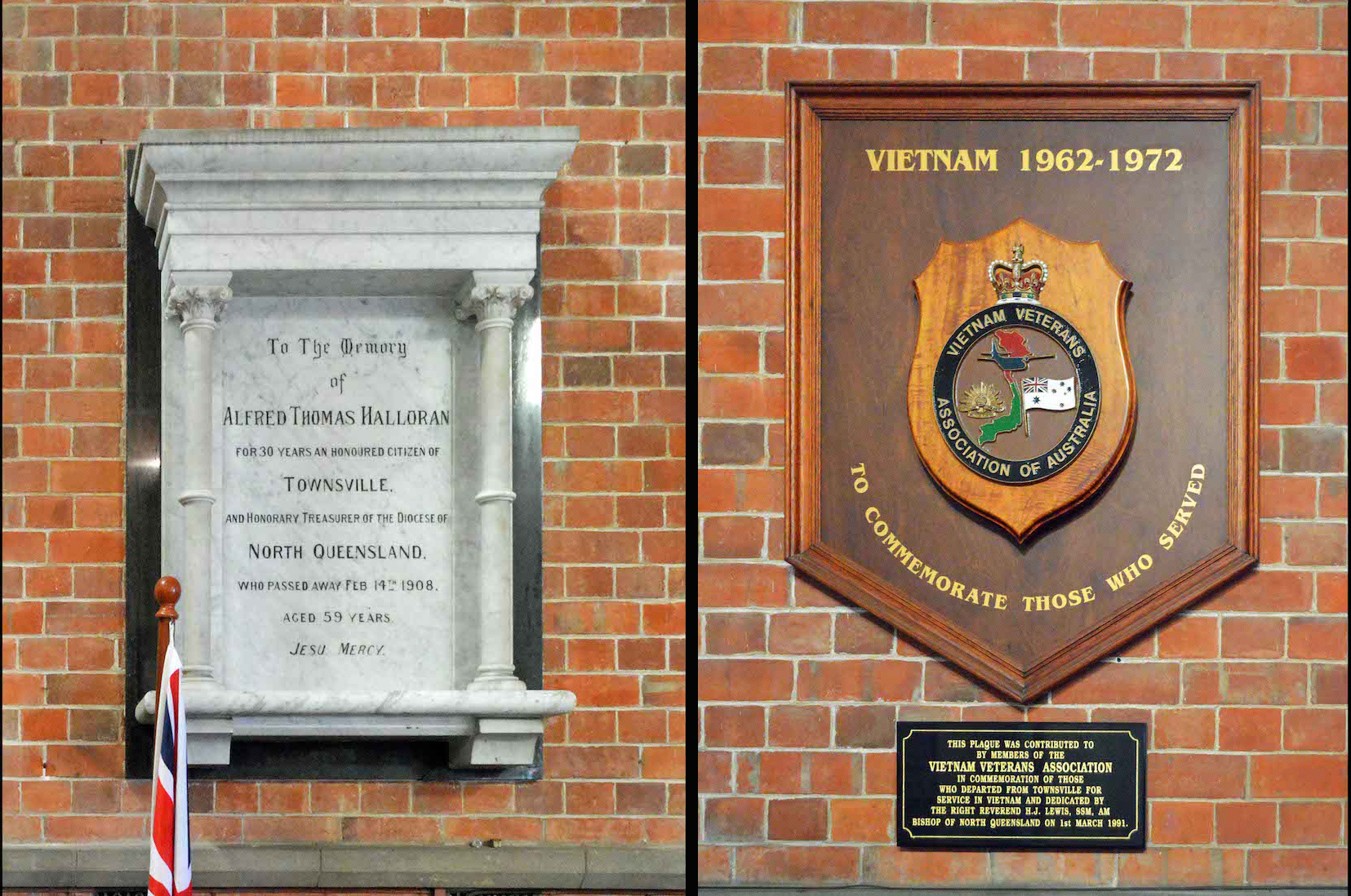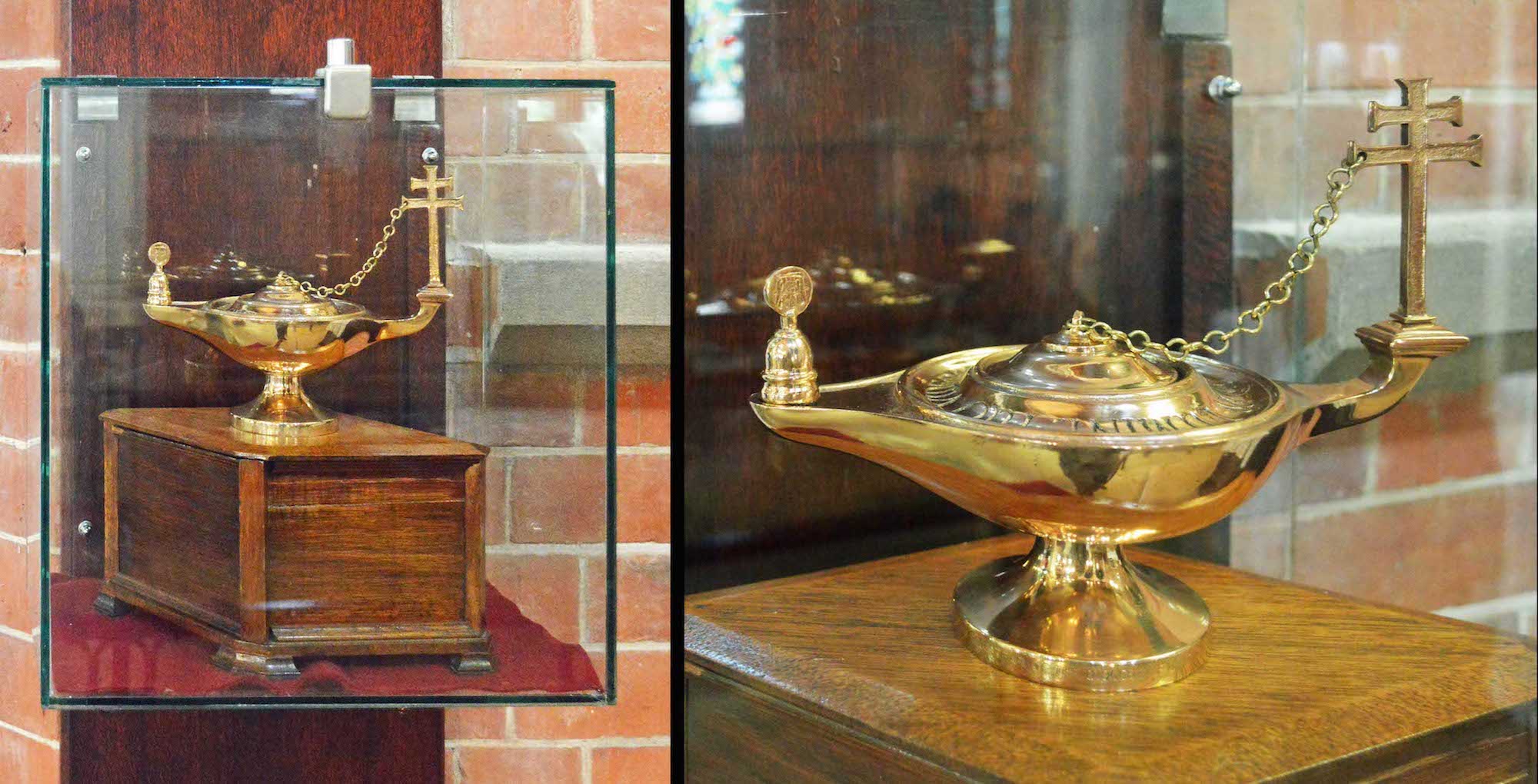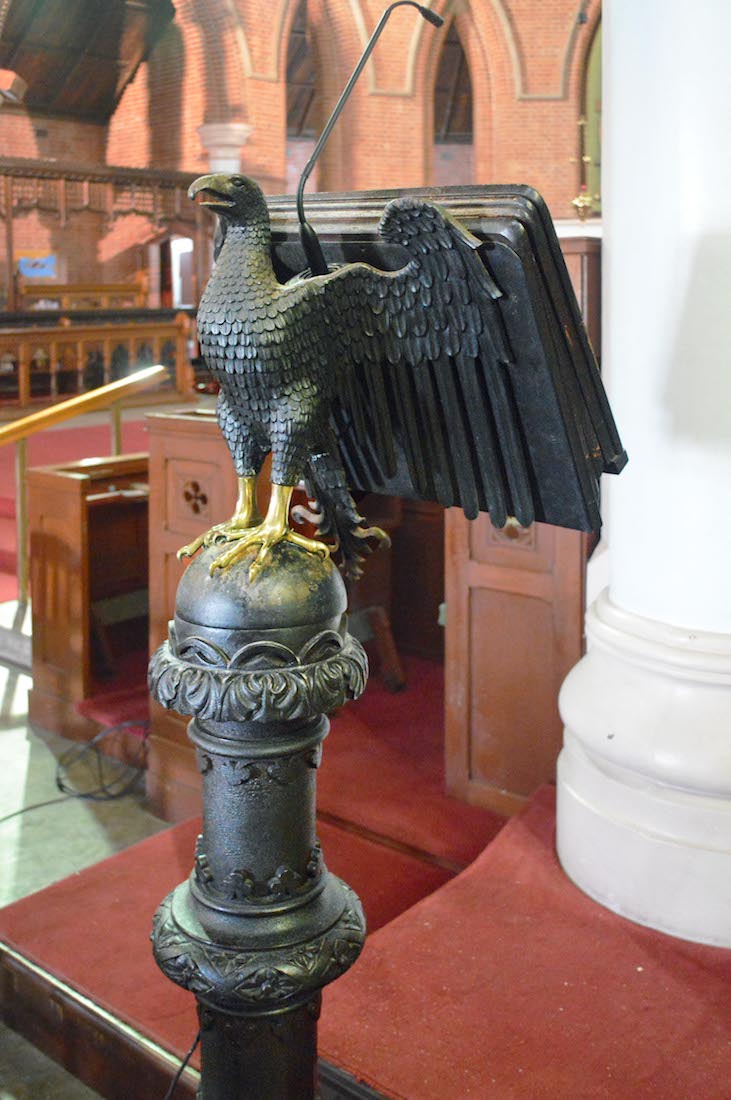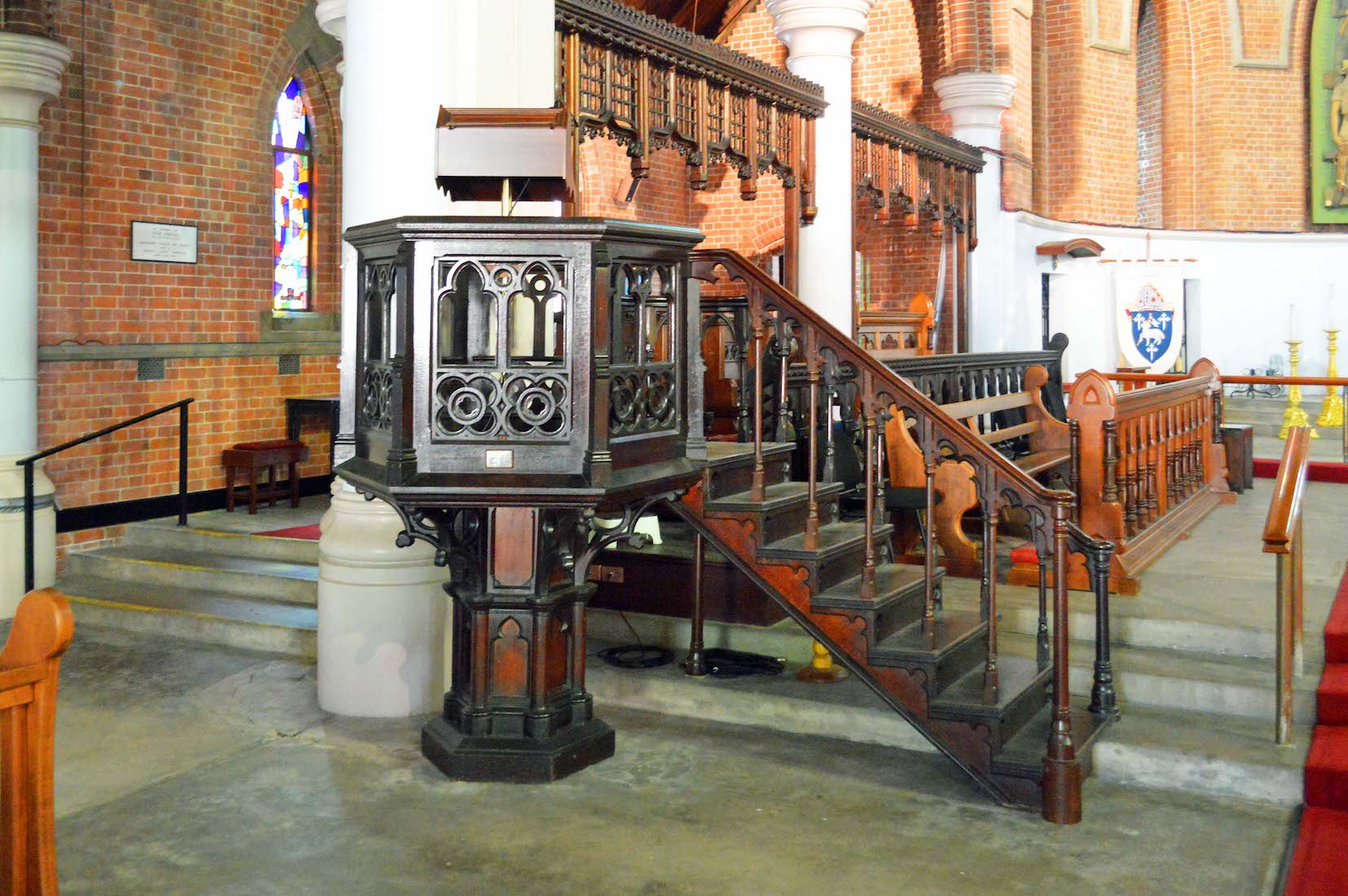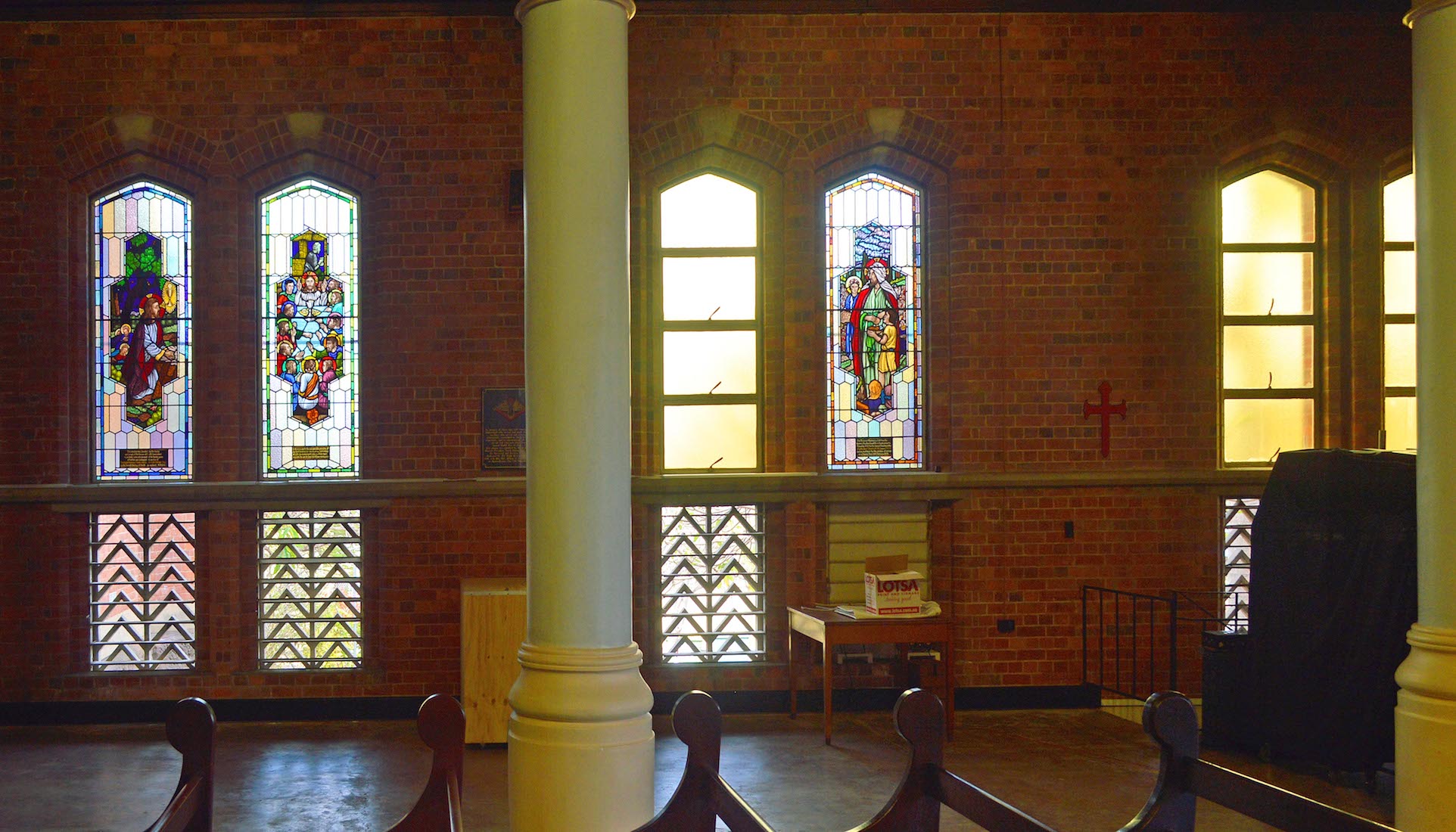
Turning to the South wall of the nave, we find there are three more stained glass windows. PLAN
22. WINDOWS N DETAIL

These windows have the same format as the windows on the North side, and show later events in the life of Jesus. Again from the right: • Jesus feeds the 5000; • The Last Supper with the disciples; • Jesus praying in the Garden while the disciples sleep..
23. NAVE WALL PLAQUE
A prominent plaque on the South wall commemorates the men and women of North Queensland who gave their lives, or were wounded, or who served and returned from World War II. The plaque dates from Remembrance Day, 11th November 1992.
24. TO THE NORTH TRANSEPT
We walk back across the nave to investigate the North transept. The main part of the transept is occupied by the organ which is on a raised platform, but the Western section is open and used for children’s activities. A spiral staircase leads up to the organ loft, alongside a North facing stained glass window.
25. WEST WALL OF NORTH TRANSEPT
On the West wall of the transept we find a memorial plaque and a stained glass window. The plaque is in memory of Clifford Charles Pownall Logan, missing in action over Mannhein in 1943. The window shows St Joseph, busy in his carpenter’s workshop.
26. ORGAN
The small brass plate remembers the gift of the pipe organ to the St James’ Church by Miss M.E. Holland in 1884. The organ was originally built by Brindley and Foster of Sheffield, England. It was installed in St James’ Church in 1884 and moved to the present Cathedral in 1892. In 1903 it was enlarged, occupying the North transept. It was moved to the loft in 1958. In 1992 the organ was further enlarged by Brown and Arkley and a new gallery built to accommodate it. For future reference, notice the painting to the left of the outer door.
27. ORGAN CONSOLE
The history of this instrument shows that it has survived against considerable odds. It has been battered by cyclones in 1903 and 1971, enlarged in a compromised manner around 1906 with pipework on two different actions and two different wind pressures, and then rebuilt in 1958 by an amateur organ builder who discarded all of the Brindley and Foster material apart from the pipework and one large double-rise bellows. The work of bringing it together in 1992, with further adjustment of voicing and wind pressures in 2002 has necessarily taken account of this chequered history.
28. NORTH TRANSEPT WINDOW AND PAINTING
The window shown at left is located by the spiral staircase up to the organ loft, and depicts the Virgin Mary and Child Jesus. The abstract painting next to the North transept door appears to show a crucifixion scene in a modern setting.
29. LADY CHAPEL
The Lady Chapel was formerly known as the Warriors’ Chapel. It stands next to the North transept doors, and just outside these are wooden posts. In olden times, gates were hung on these to keep out wild goats. The window shows the Madonna holding a sailing ship. Beneath is a note ‘Mission to Seamen’ and the dates 1927–2017 – this last presumably the date of the window. St James’ Cathedral has long had a ministry with The Mission to Seafarers (Seamen).
30. LADY CHAPEL CERAMIC AND ALTAR
The carved and decorated altar in the Lady Chapel features a central emblem of a vertical sword piercing a heart with wings. On a shelf at left is a ceramic sculpture of Our Lady and the Christ Child.
31. TO THE SOUTH TRANSEPT
We cross over to the South transept. This transept is also in two parts, the main section having a gabled roof and a triple if high, clear lancets. A large dark stained altar stands at left, and the two shown windows are clerestory windows on the East transept wall. The windows show St Paul at right, and perhaps St Peter, the fisherman, at left. There is a small mosaic above the transept door.
32. SOUTH TRANSEPT MOSAIC
The mosaic has at centre the Alpha and Omega designation for Christ, and at centre the Chi–Rho symbol. As well there are the insignia of the twelve apostles. Clockwise spiral in from bottom left: Jude, James the Less, Philip, Judas, + , Thomas, Bartholomew, Matthias, Simon, Andrew, Peter, John, and James the Greater. [Judas and Matthias are listed here, but Matthew is missing. The traditional insignia for Matthew is an angel, but I see no sign of one here.].
33. SOUTH TRANSEPT
The South transept opens out more widely to the West, with two more stained glass windows, a memorial and a shield banner on the walls. There is more seating in this area.
34. SOUTH TRANSEPT WINDOWS
The window on the South wall is shown at left: I do not know who this represents. The right window on the West wall of the transept is a version of the famous Holman Hunt painting. ‘The Light of the World’ (1851–53) is an allegorical painting representing the figure of Jesus preparing to knock on an overgrown and long-unopened door, illustrating Revelation 3:20: "Behold, I stand at the door and knock; if any man hear My voice, and open the door, I will come in to him, and will sup with him, and he with Me". The door has no handle: it can only be opened from the inside.
35. MEMORIALS
The marble tablet commemorates Alfred Thomas Halloran who was Honorary Treasurer of the Diocese of North Queensland for many years. The brown shield remembers those who served in Vietnam between 1962 and 1972.
36. BLESSED SACRAMENT CHAPEL ALTAR
The South transept is designated the Blessed Sacrament Chapel, also known as the Chapel of the Resurrection. The large timber altar and reredos were the original High Altar, and were moved to the South transept in 1959. we might notice the little grey plaque on the wall to the left of the altar, the gold altar cross and tabernacle, and the aumbry in the wall to the right of the altar. Also at the corner to the left of the altar is a glass case.
37. ALTAR CROSS AND TABERNACLE, AUMBRY
The little memorial plaque remembers Bishop Hurtle John Lewis (1926–2015), Seventh Bishop of North Queensland. The gold altar cross stands on a gold tabernacle, where the Reserved Elements of the Eucharist are kept. The gold aumbry in the wall at right serves a similar purpose.
38. GOLDEN LAMP
In the glass case next to the transept altar we find this wonderful golden lamp! Words like genie, Aladdin and three wishes come to mind, but perhaps it was once used for incense?
39. LECTERN
Nearby stands this smart eagle lectern. Eagle lecterns are very common in Anglican churches and cathedrals, although they are usually made of brass. The lectern carries a copy of the Bible and it is from here that the Scripture is read at services. The eagle symbolism is rather obscure, but may relate to the eagle being the insignia of the disciple John, or perhaps a reference to Isaiah 40:31: ‘but those who hope in the LORD will renew their strength. They will soar on wings like eagles; ... ’
40. PULPIT
The pulpit is made of cedar and is similar in style to the Blessed Sacrament Chapel altar. It is from here that the Good News is preached, Sunday by Sunday.


